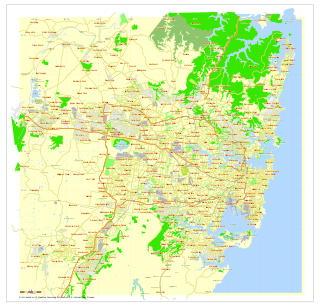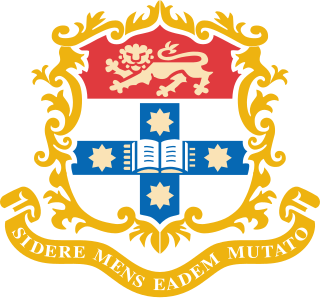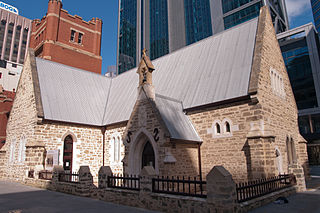James Albert Miles (1871 – 1953) was a senior inspector of schools in Western Australia in the early 20th century.

Western Australia is a state occupying the entire western third of Australia. It is bounded by the Indian Ocean to the north and west, and the Southern Ocean to the south, the Northern Territory to the north-east, and South Australia to the south-east. Western Australia is Australia's largest state, with a total land area of 2,529,875 square kilometres, and the second-largest country subdivision in the world, surpassed only by Russia's Sakha Republic. The state has about 2.6 million inhabitants – around 11 percent of the national total – of whom the vast majority live in the south-west corner, 79 per cent of the population living in the Perth area, leaving the remainder of the state sparsely populated.
During the early decades of the 20th century, the district school in Duke Street, Toodyay played an important part in the history of education in Western Australia. This was due to the influence of James Miles, an educational reformer who selected Toodyay as a "country observation school", and to be a prototype for the type of school he believed should be established in rural areas. As a result of his influence Toodyay achieved a number of firsts in Western Australia: the first country observation school, the first consolidated school, the first in the Special Rural Schools programme, and the first to establish what became the Parents and Citizens Association. [1]

The old Newcastle School is an historic building on Duke Street North in Toodyay, Western Australia. It was the first purpose built school in the new town site of Toodyay, and operated as a school from 1887 to 1954.

Education in Western Australia consists of public and private schools in the state of Western Australia, including public and private universities and TAFE colleges. Public school education is supervised by the Department of Education, which forms part of the Government of Western Australia. The School Curriculum and Standards Authority is an independent statutory authority responsible for developing a curriculum and associated standards in all schools, and for ensuring standards of student achievement, and for the assessment and certification according to those standards.
Miles was a strong-minded man who, having achieved academically in New South Wales, believed in his worth as an innovative educator. His career path was not always smooth when his ideas met with Departmental opposition along the way.[ vague ]

New South Wales is a state on the east coast of Australia. It borders Queensland to the north, Victoria to the south, and South Australia to the west. Its coast borders the Tasman Sea to the east. The Australian Capital Territory is an enclave within the state. New South Wales' state capital is Sydney, which is also Australia's most populous city. In September 2018, the population of New South Wales was over 8 million, making it Australia's most populous state. Just under two-thirds of the state's population, 5.1 million, live in the Greater Sydney area. Inhabitants of New South Wales are referred to as New South Welshmen.
James Albert Miles was born in Ballarat, Victoria in 1871. He began his teaching career in NSW as a pupil-teacher before being awarded a scholarship to the Teachers' College in Sydney. While at the College he gained his matriculation, and enrolled part-time at the University of Sydney. He graduated in Arts, [2] in 1894 having studied logic, mental philosophy and education psychology. In 1899, after teaching at various schools, he accepted an appointment as head teacher at the school in Guildford, Western Australia. [3]

Sydney is the state capital of New South Wales and the most populous city in Australia and Oceania. Located on Australia's east coast, the metropolis surrounds Port Jackson and extends about 70 km (43.5 mi) on its periphery towards the Blue Mountains to the west, Hawkesbury to the north, the Royal National Park to the south and Macarthur to the south-west. Sydney is made up of 658 suburbs, 40 local government areas and 15 contiguous regions. Residents of the city are known as "Sydneysiders". As of June 2017, Sydney's estimated metropolitan population was 5,230,330 and is home to approximately 65% of the state's population.

Matriculation is the formal process of entering a university, or of becoming eligible to enter by fulfilling certain academic requirements such as a matriculation examination.

The University of Sydney is an Australian public research university in Sydney, Australia. Founded in 1850, it was Australia's first university and is regarded as one of the world's leading universities. The university is colloquially known as one of Australia's sandstone universities. Its campus is ranked in the top 10 of the world's most beautiful universities by the British Daily Telegraph and The Huffington Post, spreading across the inner-city suburbs of Camperdown and Darlington. The university comprises 9 faculties and university schools, through which it offers bachelor, master and doctoral degrees.

When Miles arrived in Western Australia, he reported to Cyril Jackson, the inspector-general of schools. Miles greatly admired Jackson, and said that he was "the greatest educational leader under whom I had ever served". [3] :49 Miles achieved good results at Guildford and after postings at various schools, including North Fremantle, West Leederville, and Subiaco, [2] he was promoted to head teacher at Perth Boys School, became school inspector in 1911 and eventually a senior inspector of schools in 1913 [4] with a special interest in rural education.

Sir Cyril Jackson KBE was a British educationist, important in the development of education in Western Australia.

The Old Perth Boys School, located at 139 St Georges Terrace, Perth, Western Australia, is the earliest government school building in Western Australia. The single-storey limestone building was designed by William Ayshford Sanford in 1852 and is a significant example of a colonial building constructed in Perth from the mid-nineteenth century.

In 1915 Miles chose Toodyay to be the pioneer of his Special Rural Schools programme. To this end he worked with the headmaster Roderick Brooke Cowden [5] and his staff to design the equipment needed to enable the students to be more independent and resourceful in the learning process. Subjects were to be based on the practical activities of farming life. School gardens were established where the children experimented with different types of grains such a wheat, oats and barley, and the growing of vegetables and flowers. Girls were taught fruit and vegetable preservation, and first aid. When teaching standard curriculum subjects such as arithmetic and history, teachers were encouraged to use local sources, for example "figures showing the district's imports and exports were computed from the railway records". [3] :58 By 1920 twelve other special rural schools were established in the state. This number would peak at 40 in 1922. This success was in no small part due to the government's recognition of the state's dependence on agriculture. The commissioners of the Royal Commission into Education 1921 visited Toodyay and were highly impressed with its programme.

A grain is a small, hard, dry seed, with or without an attached hull or fruit layer, harvested for human or animal consumption. A grain crop is a grain-producing plant. The two main types of commercial grain crops are cereals and legumes.

Horticulture has been defined as the culture of plants for food, comfort and beauty. A more precise definition can be given as "The cultivation, processing, and sale of fruits, nuts, vegetables, ornamental plants, and flowers as well as many additional services". It also includes plant conservation, landscape restoration, soil management, landscape and garden design, construction, and maintenance, and arboriculture. In contrast to agriculture, horticulture does not include large-scale crop production or animal husbandry.

First aid is the first and immediate assistance given to any person suffering a serious illness or injury, with care provided to preserve life, prevent the condition from worsening, or to promote recovery. It includes initial intervention in a serious condition prior to professional medical help being available, such as performing cardiopulmonary resuscitation (CPR) while awaiting for an ambulance, as well as the complete treatment of minor conditions, such as applying a plaster to a cut. First aid is generally performed by someone with basic medical training. Mental health first aid is an extension of the concept of first aid to cover mental health.
In 1929 the first field day for the Government School Experimental Plots was held; [6] it attracted large crowds of farmers and parents. Schools also started competing with displays at the annual Perth Royal Show in Claremont. These were popular events.
Following a tour in 1920 to study rural schools in North America, Miles introduced the idea of consolidating outlying one-teacher schools into a central school. Toodyay was selected, with 26 students from West Toodyay being brought into town by a horse-drawn van. On 12 November 1920 the Minister for Education, Hal Colebatch came to Toodyay to officially open the first consolidated school. [7] "Thus began a movement that was to eliminate nearly all of the state's one-teacher-schools by the early 1960s." [3] :61
Miles' other major achievements included the establishment of correspondence classes in 1918 and a revised primary school curriculum in 1936. [4]
Miles retired in 1936. He died on 27 April 1953, at his Claremont home. [4]





